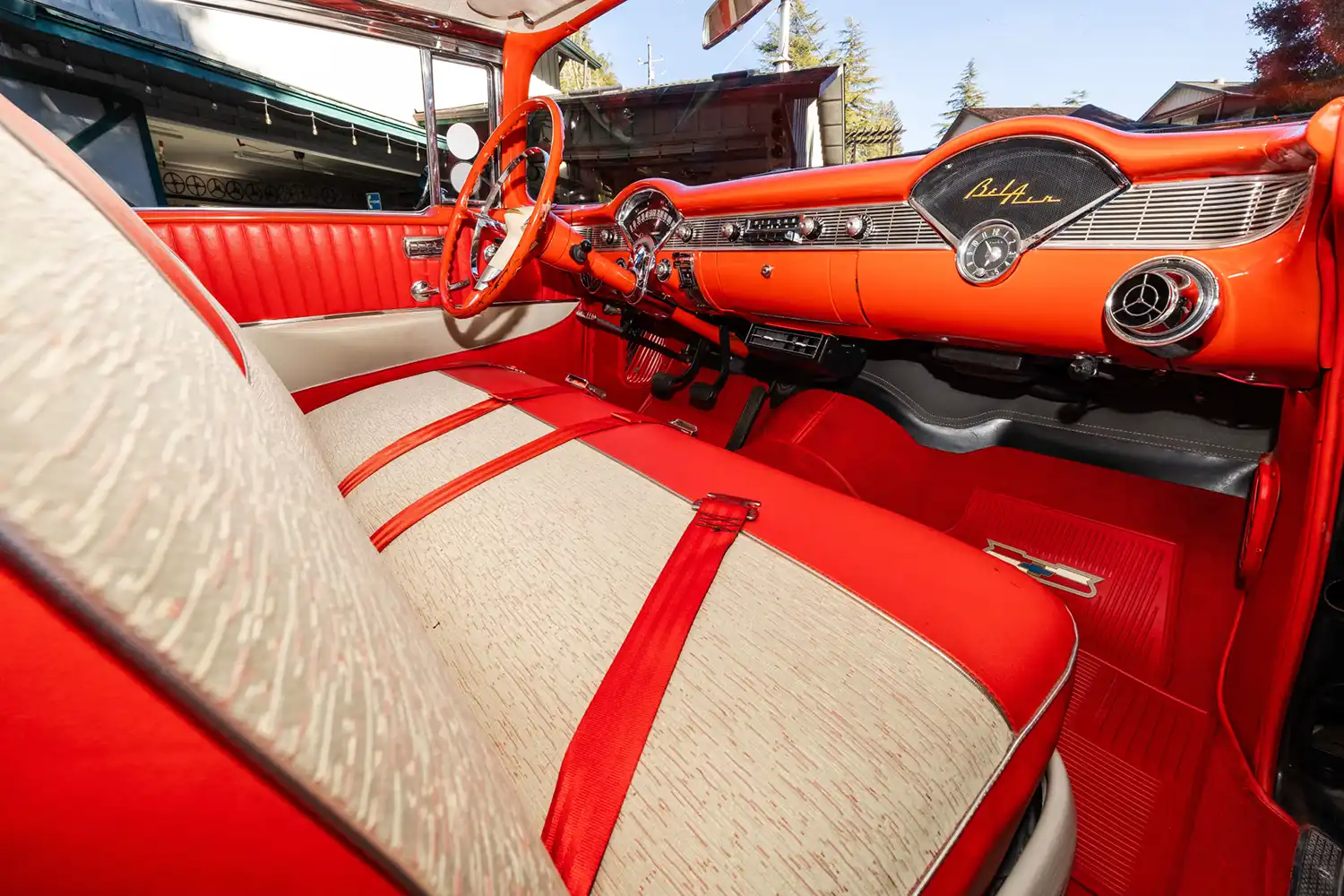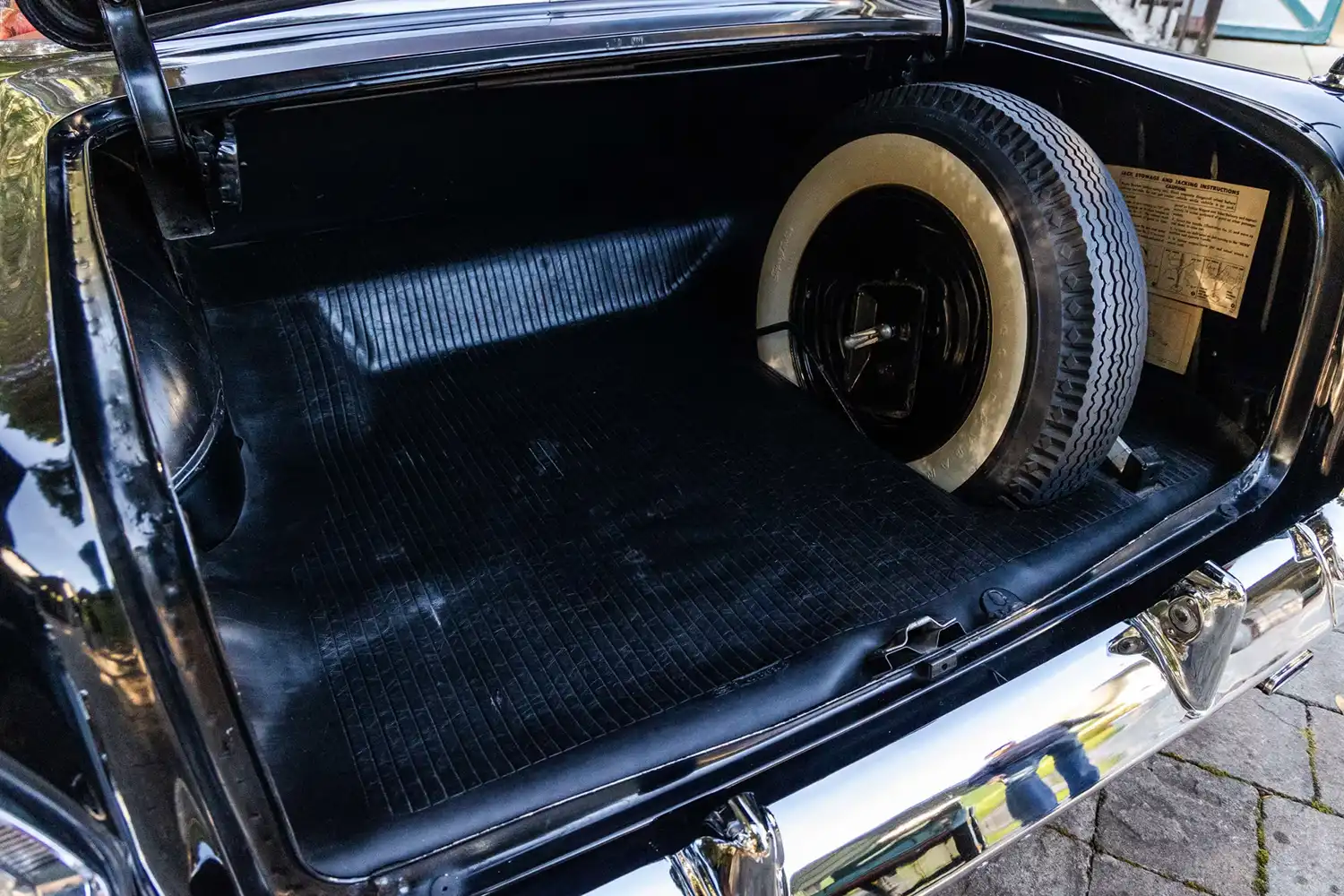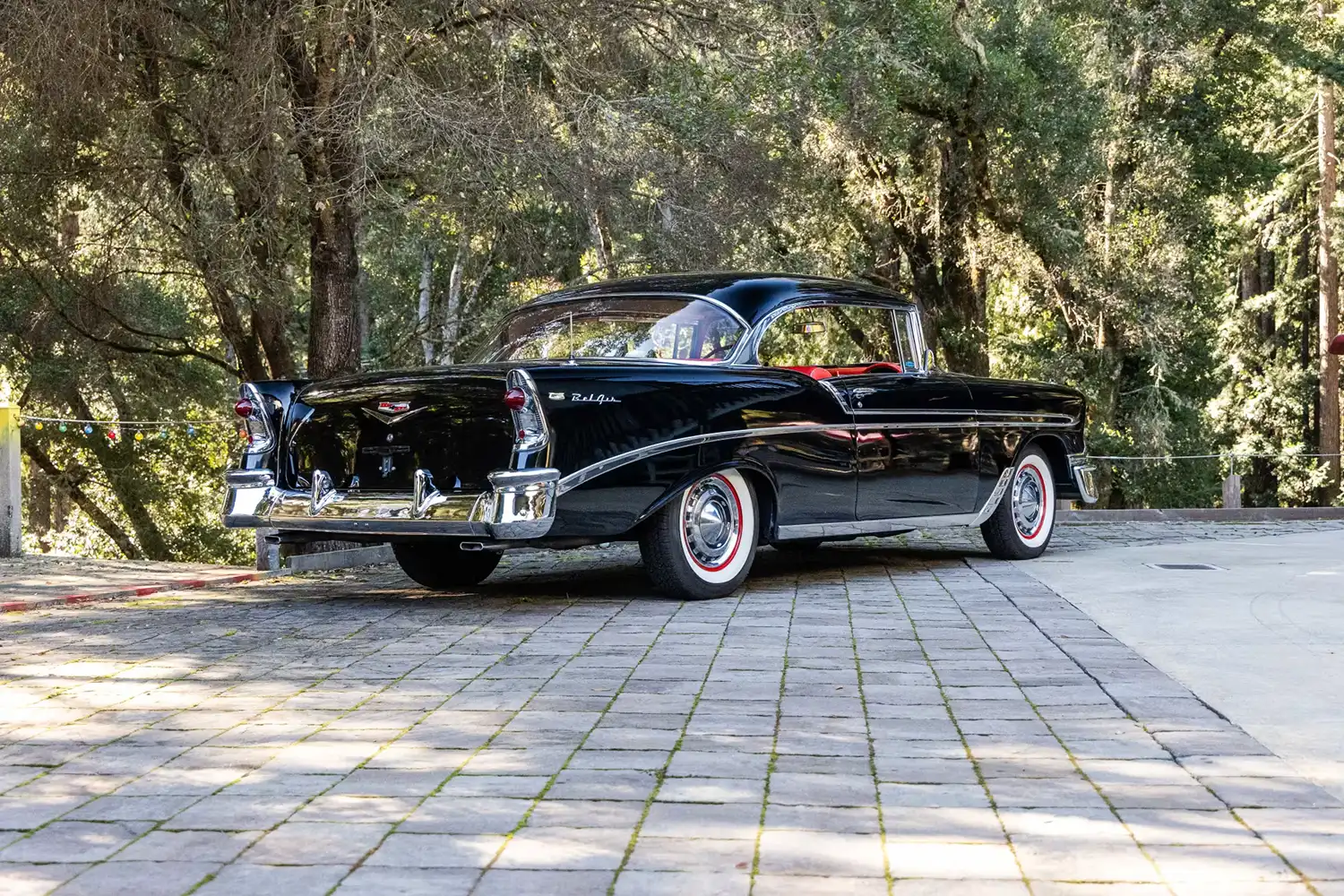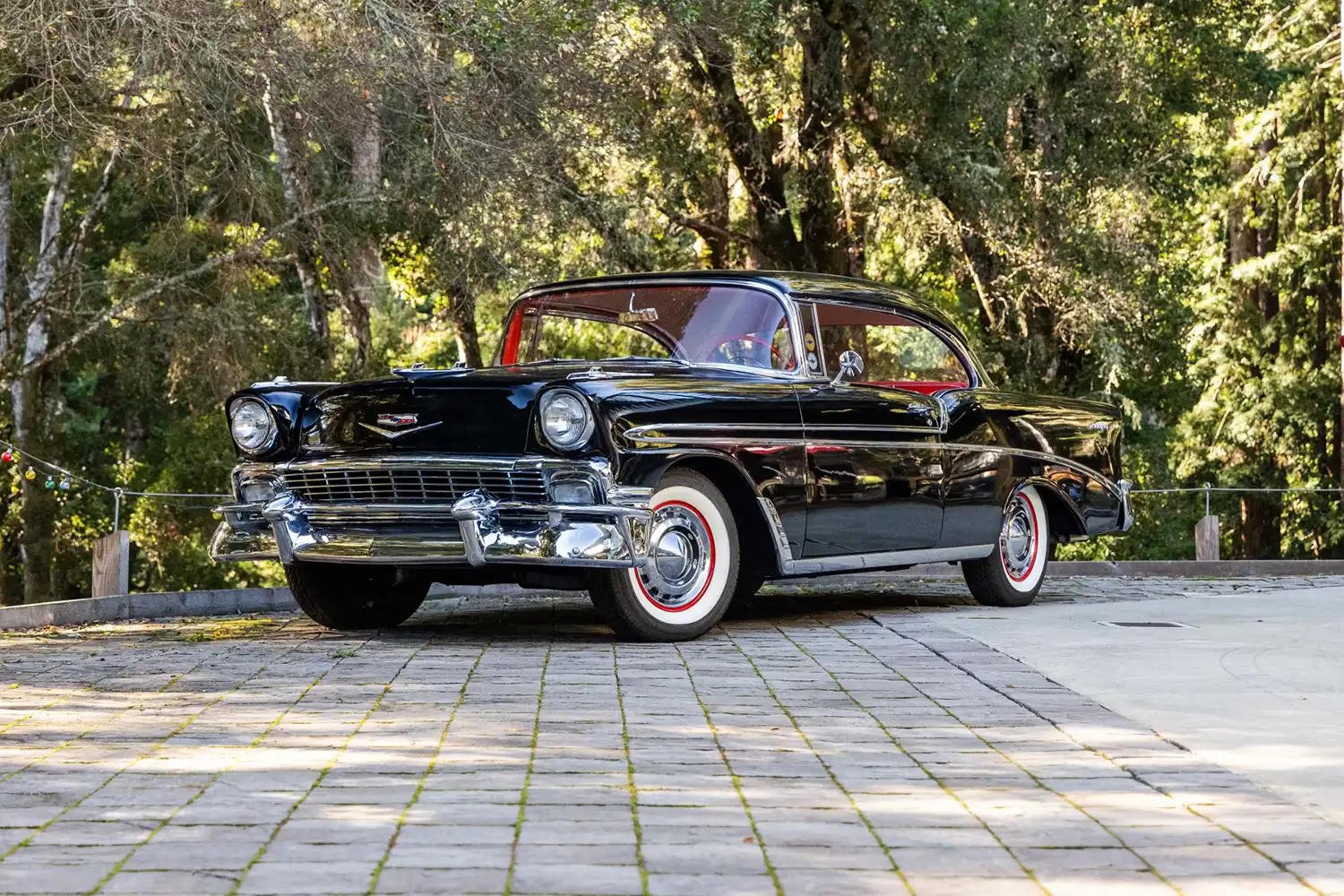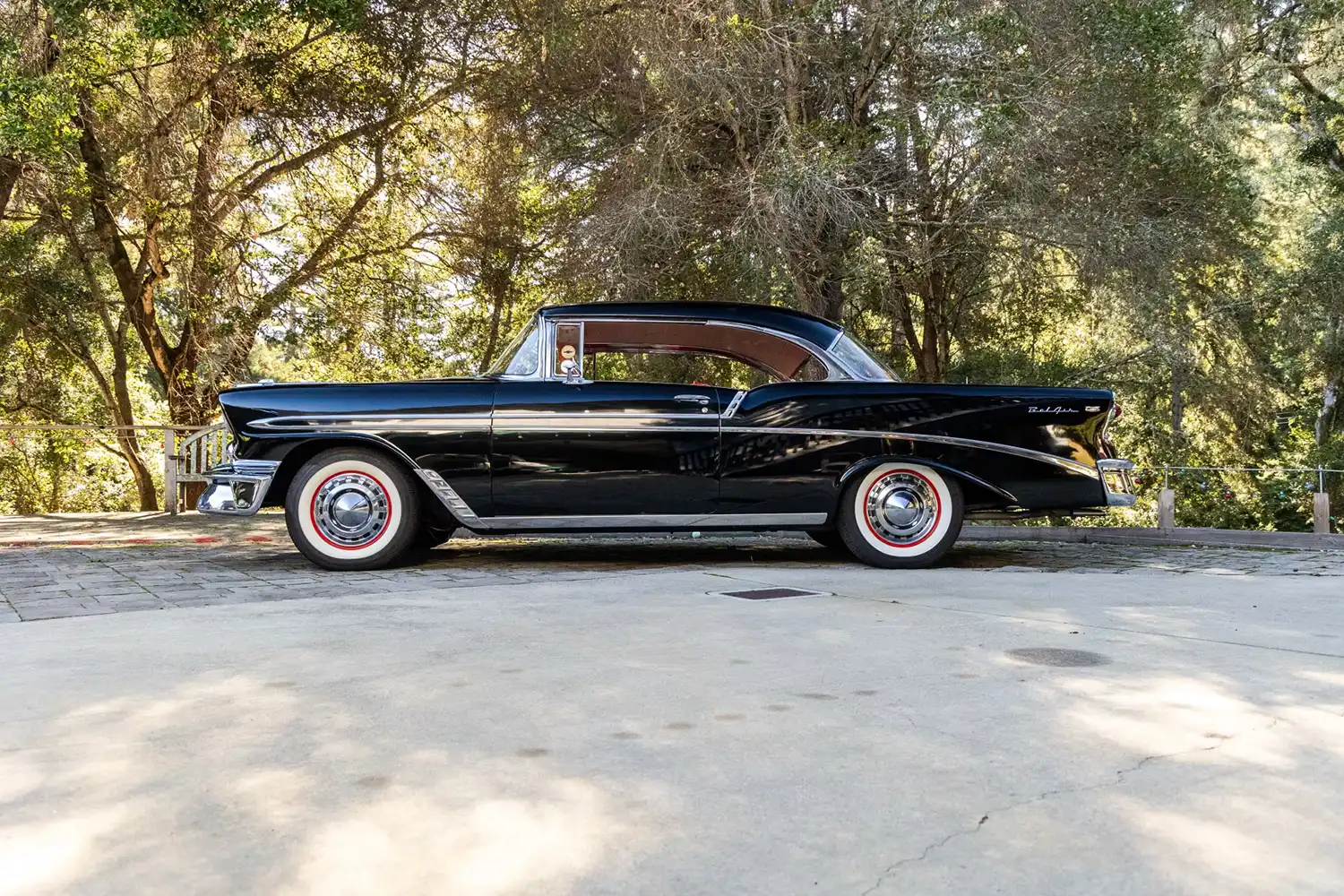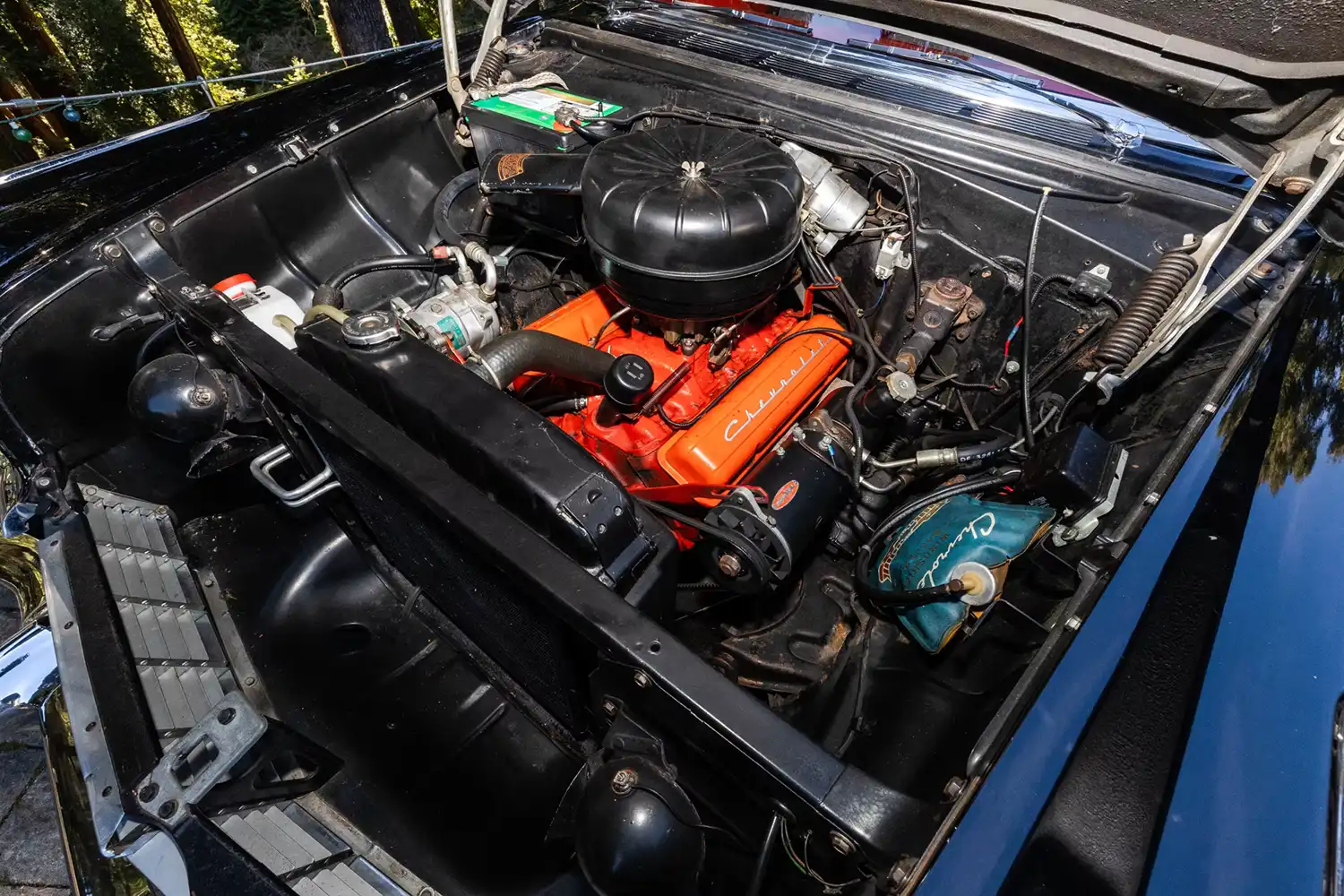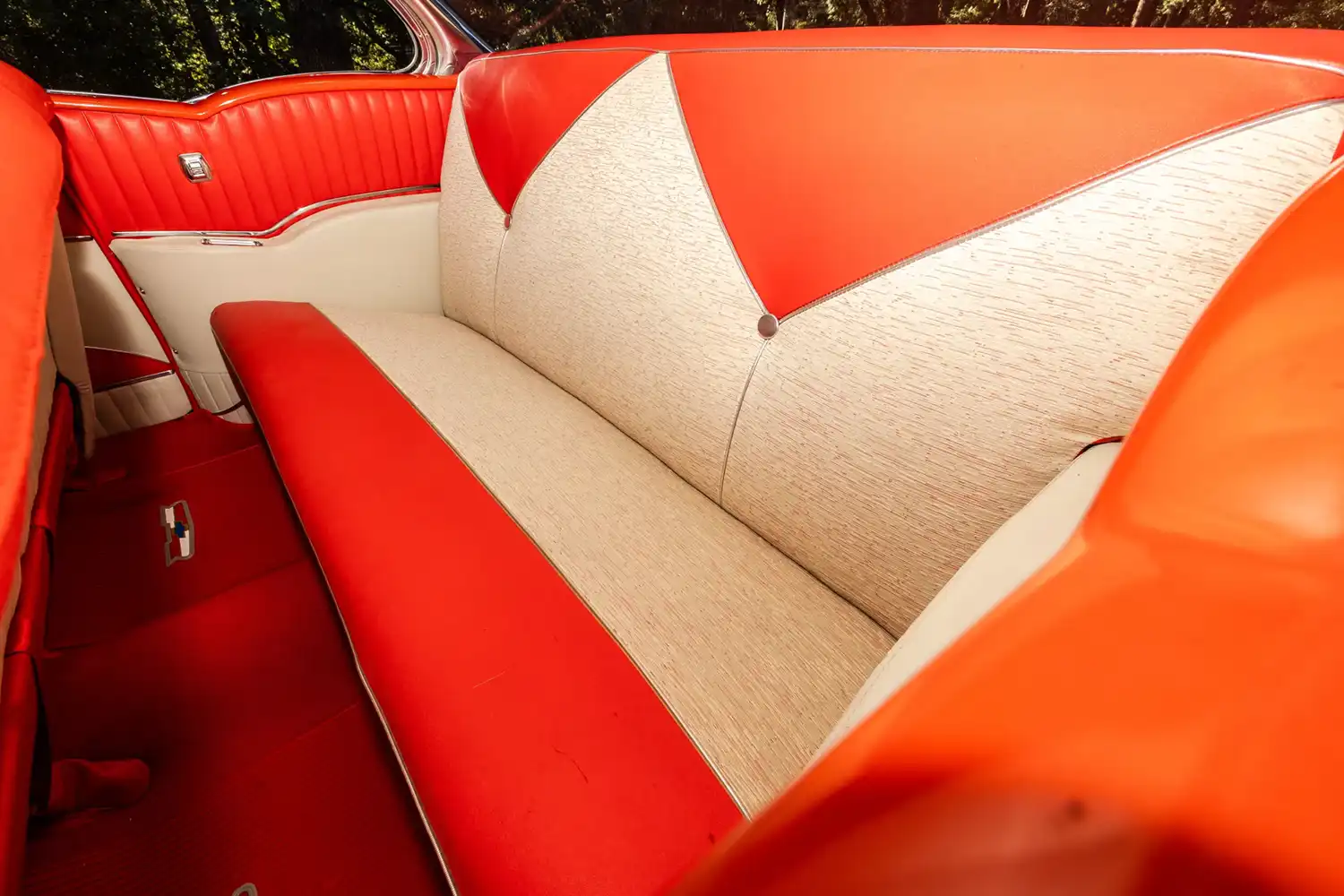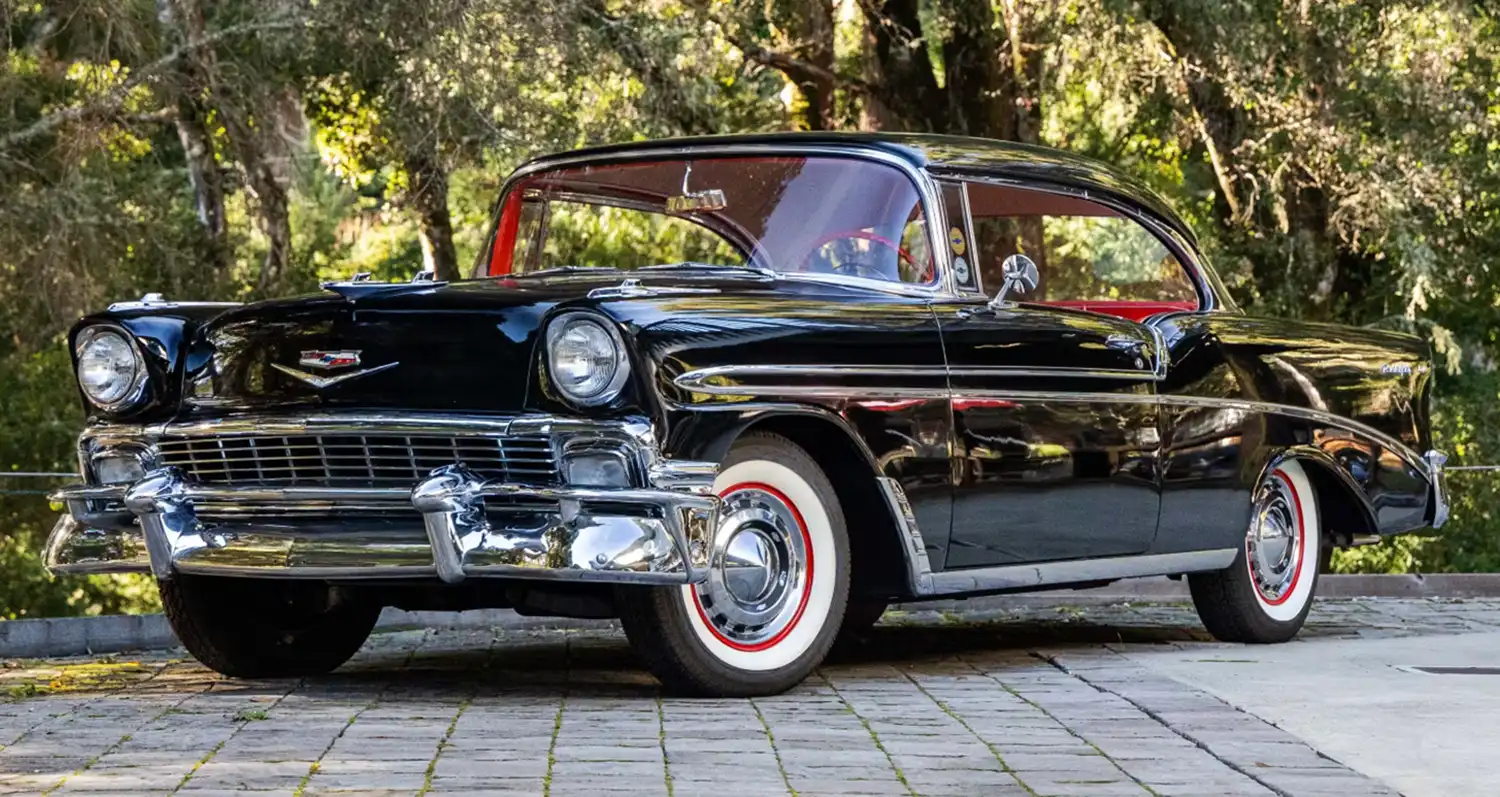
Full details & bid : mecum.com
The 1956 Chevrolet Bel Air is a celebrated icon of the mid-1950s American automotive landscape, representing a sweet spot in design and performance for the marque. Introduced as Chevrolet’s premium passenger car line, the Bel Air for 1956 built upon the success of its predecessors with refined styling, enhanced features, and the availability of the increasingly popular V8 engine. This model year is particularly cherished by enthusiasts for its distinctive full-width grille, stylish side trim, and the overall embodiment of the optimistic and prosperous post-war era. The Bel Air was offered in various body styles, including the popular hardtop, sedans, and convertibles, each contributing to its widespread appeal and enduring legacy as a true American classic.
Powertrain and Performance: The 1956 Chevrolet Bel Air offered a range of engine options to cater to different preferences, with the highlight being the availability of the robust 265 cubic inch (4.3-liter) V8 engine. This engine, often referred to as the “small-block,” was a relatively new design for Chevrolet and provided a significant step up in power and performance compared to the standard inline-six engines. In the specific vehicle highlighted, a 265 CI V-8 engine is present, indicating a desirable power option for the era. Depending on the specific configuration and whether it was equipped with the optional “Power Pack” (which often included a four-barrel carburetor and higher compression), this engine could produce upwards of 170 to 205 horsepower. Paired with a 3-speed manual transmission, as indicated in the specifications, the Bel Air offered a traditional and engaging driving experience, allowing drivers to fully utilize the V8’s torque and power. Performance figures for a 1956 Bel Air with the 265 V8 and manual transmission would have been respectable for its time, providing good acceleration and comfortable cruising capabilities on the open road.
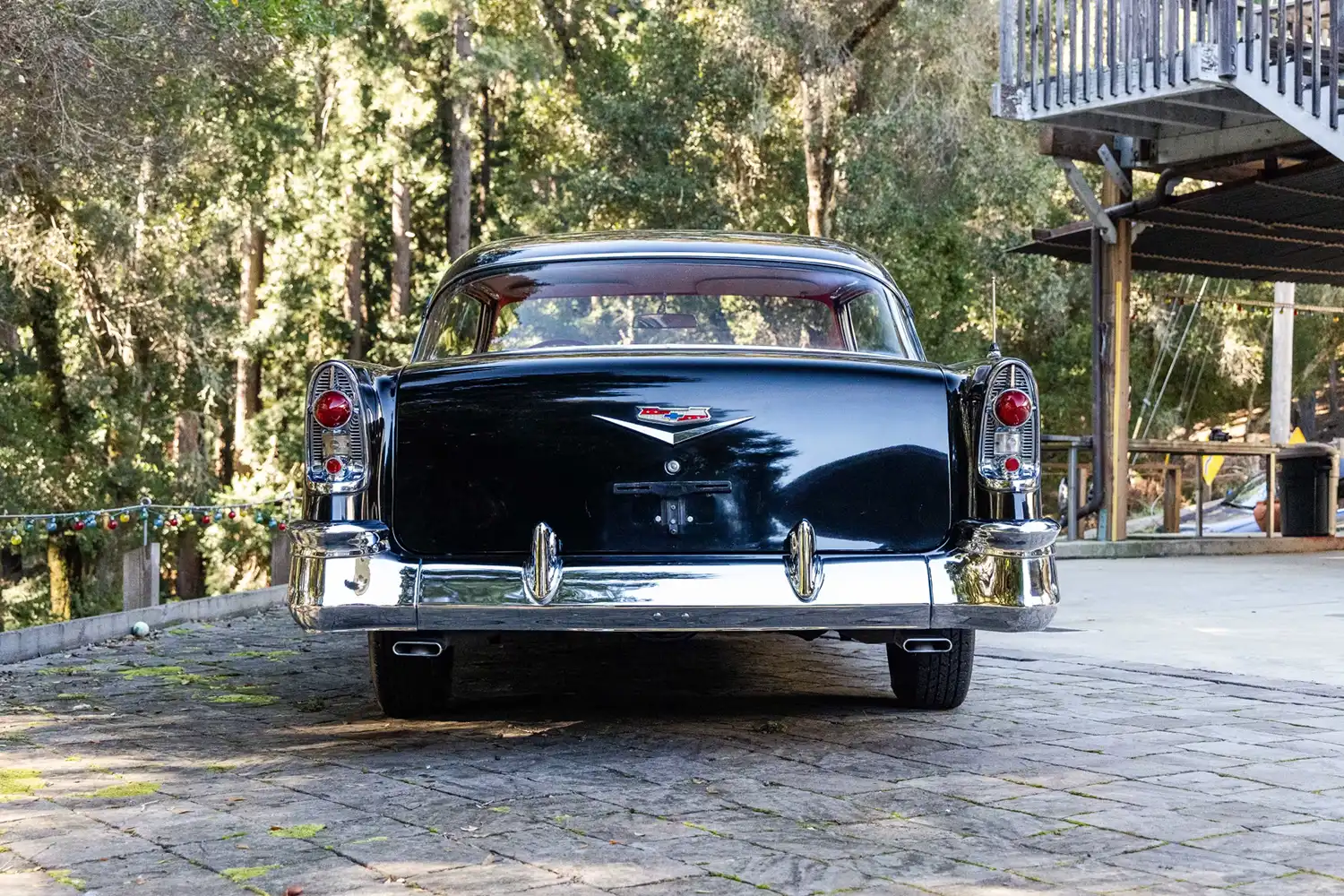
Design and Features: The 1956 Chevrolet Bel Air showcased a distinctive and stylish design that has made it a lasting icon. Its most recognizable feature is the full-width grille with prominent horizontal bars and integrated parking lights. The side profile was accentuated by a sweeping chrome trim that visually separated the two-tone paint schemes that were popular at the time. The hardtop model, with its pillarless design when the windows were down, offered a sleek and open appearance. Inside, the Bel Air prioritized comfort and style, often featuring two-tone upholstery that complemented the exterior colors. The highlighted vehicle boasts a New Red and White interior, a classic and eye-catching combination for the era. A Bench seat provided ample seating capacity in the front. Notable features included Power steering, which made maneuvering the large car easier, and Factory air conditioning, a desirable luxury for the time, especially in warmer climates. Power windows added another layer of convenience. The car was also equipped with an AM radio for entertainment, a Clock, and stylish Full-size wheel covers paired with Wide Whitewall tires, all contributing to its classic 1950s aesthetic. The presence of a Delco-Remy 12-volt generator indicates an upgrade from earlier 6-volt systems, providing more reliable electrical power.
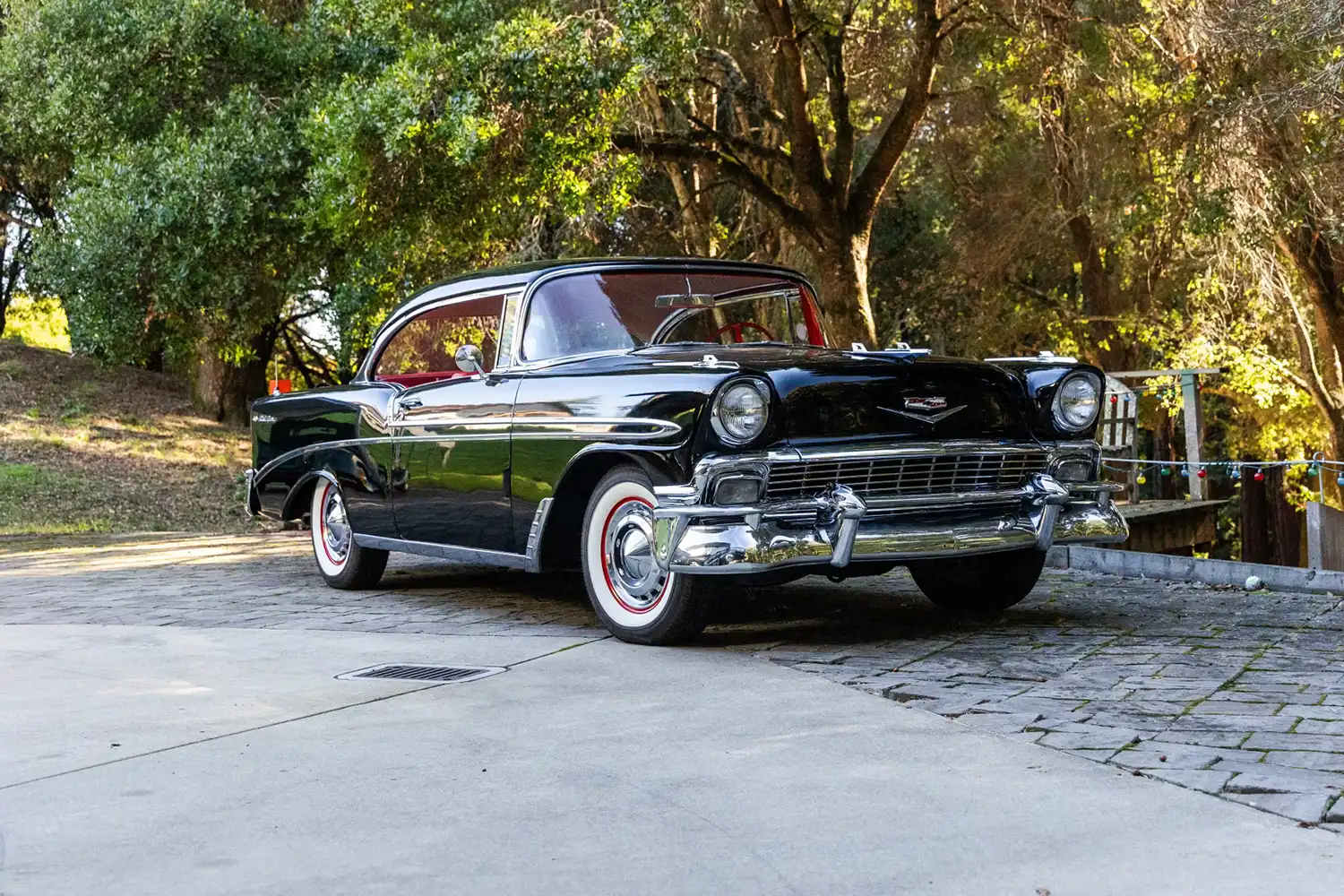
Variants and Models: The 1956 Chevrolet Bel Air was the top trim level in Chevrolet’s passenger car lineup for that year and was available in several distinct body styles to cater to different needs and preferences. These included the two-door Hardtop (often considered the most stylish), the four-door Sedan (offering practicality for families), the two-door Sedan (a more budget-friendly option), the Convertible (embodying open-top cruising), and the Nomad (a stylish two-door station wagon). While the highlighted vehicle is a Hardtop, each body style shared the Bel Air’s distinctive styling cues and available features. The engine and transmission options, as well as interior and exterior color choices, allowed for a degree of customization across all Bel Air models. The Bel Air name itself signified the premium offering from Chevrolet, positioned above the mid-range Two-Ten and the entry-level One-Fifty series.
Legacy and Collectibility: The 1956 Chevrolet Bel Air holds an incredibly significant place in automotive history and is one of the most beloved and highly collectible cars from the 1950s. Its iconic styling, the availability of the powerful small-block V8 engine, and its representation of the optimistic spirit of the era contribute to its enduring appeal. The Hardtop model, like the one described, is particularly sought after for its sleek lines and pillarless design. Well-maintained or meticulously restored examples, especially those with desirable options like the V8 engine, factory air conditioning, and power windows, command significant value in the classic car market. The 1956 Bel Air is a frequent participant in classic car shows and auctions, symbolizing a golden age of American automotive design and engineering. Its timeless elegance and cultural significance ensure its continued desirability among collectors and enthusiasts worldwide.
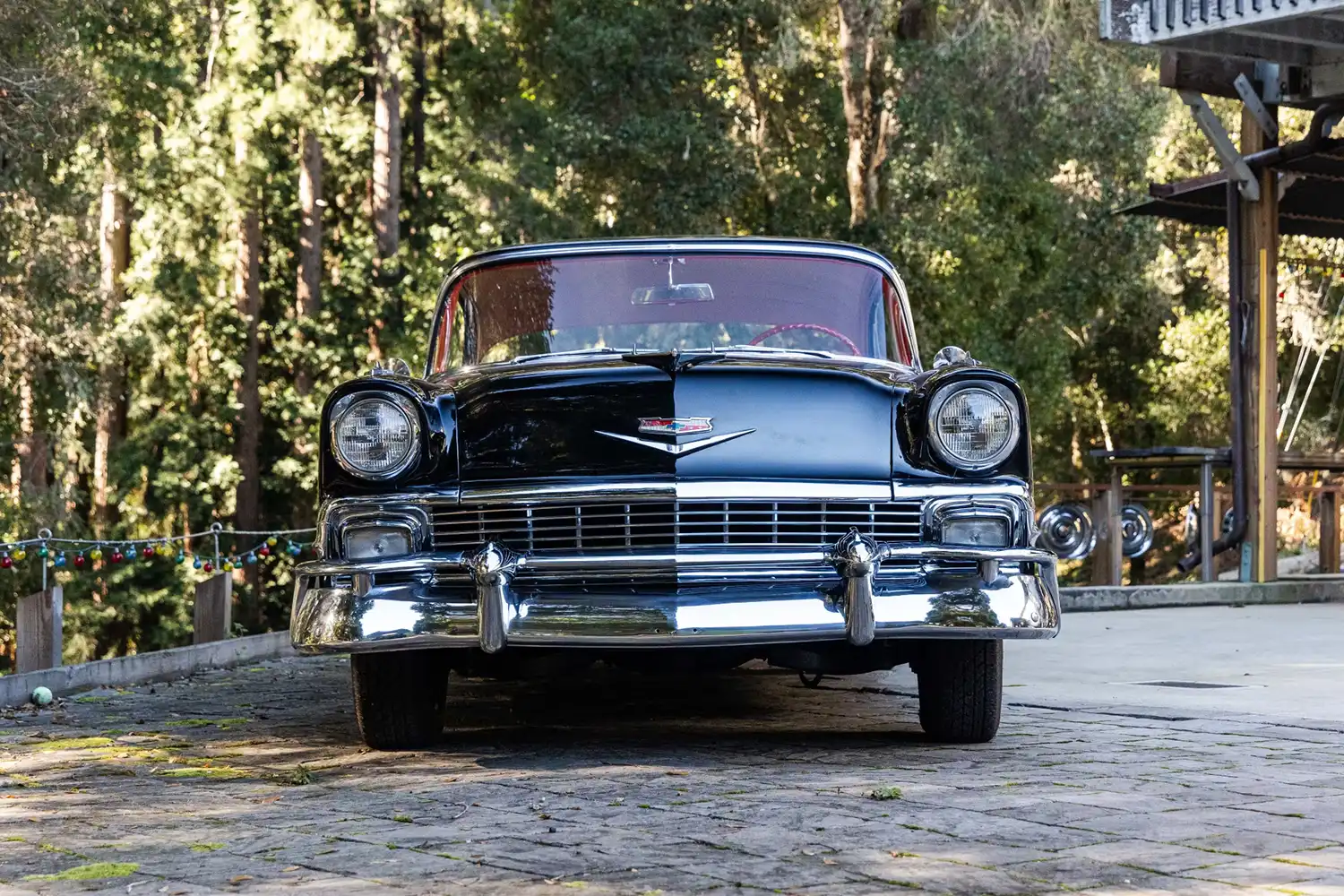
Summary:
- A premium model in Chevrolet’s 1956 lineup.
- Featured distinctive full-width grille and stylish side trim.
- Available in various body styles, including the popular Hardtop.
- Offered a range of engines, including the desirable 265 CI V-8.
- The highlighted vehicle has a 3-speed manual transmission.
- Notable features include a new Red and White interior, power steering, factory air conditioning, and power windows.
- A highly iconic and collectible classic car representing the 1950s.
Disclaimer: Information provided is for general informational purposes only and is based on available details. Potential buyers are advised to conduct their own thorough inspection and verification of any vehicle.
AI Assistance: Gemini
